| | Background | What are snack foods? | Snacking patterns in Canada | When snack foods are mostly consumed? | What are the reasons for choosing snack food products? | From where did consumers purchase their snacks? | Snacking and health | Do you know these about children’s and teen’s snacking habits | Source of Information
.
Background
In recent years snack foods have become increasingly common among Canadians. The importance of the industry is growing as demand increases. The latest data show that in 2009, 24% of all meals in Canada are snack meals, compared to 22% in 2000 (NPD, 2010). The total output has increased by more than 50% over the past decade, from 1.4 billion in 2000 to 2.1 billion in 2009. Average annual growth of total output of snack food industry was 4.6% (Statistics Canada, 2010).
The reasons for increase in snacking are simple, eating habits and patterns are changing along with demographics, population aging and consumer lifestyles. Consumers appear to be more interested in convenience and saving time by purchasing easily portable foods. Snacks are becoming a meal substitute and evolving into a fourth meal of the day. More attention has been paid to healthy eating over the recent year. Snacks can be an important part of healthy eating diet that helps to meet nutritional needs.
What Are Snack Foods?
There are two definitions:
- According to eating occasion – foods or beverages that may be eaten between main meals.
- According to types of food eaten – common snack oriented food that may be eaten at any time of the day.
Top snack oriented foods
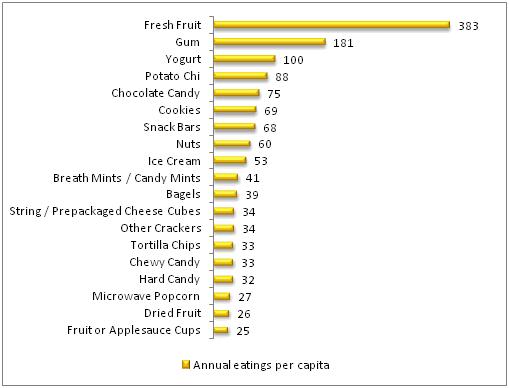
Source: The NPD Group/Snack Track Canada, year ending December 2009
Snacking Patterns in Canada
Canadian data from the NPD group indicate that snack occasion has increased significantly since 2000. The annual average number of snacks per capita has grown from 269 in 2000 to 307 in 2010.
Average number of snack meals eaten per year, 2000- 2010
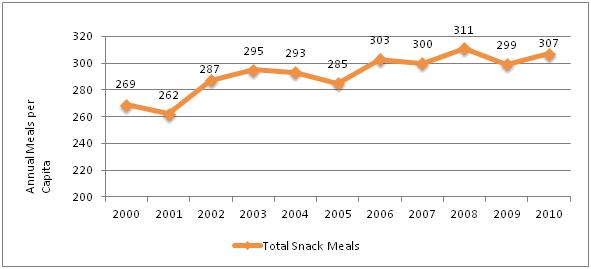
Source: The NPD Group/National Eating Trends Canada, years ending March 2010
Average number of snack meals eaten per year by venue. Annual meals per capita, 2000-2010.
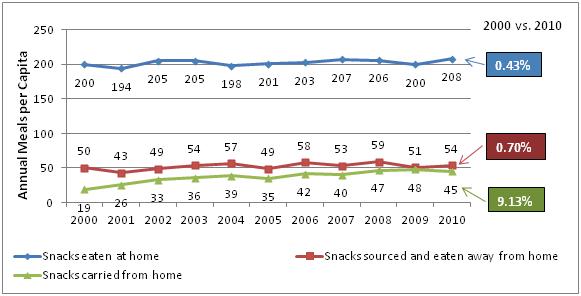
Source: The NPD Group/National Eating Trends Canada, years ending March 2010
Most of the growth is due to increase in carried from home snack occasions as compared to snacks eaten at home and snacks sourced and eaten away from home. Snacks carried away from home registered over 9% growth from 2000 to 2010. Snacks eaten at home and snacks sourced and eaten away from home accounted for 0.4% and 0.7% growth respectively.
When Snack Foods Are Mostly Consumed?
The time of the day that snack foods are mostly consumed is afternoon followed by morning and evening. More than 34% of snacks are eaten as afternoon snack meals between lunch and dinner. Evening and morning occasions have experienced downward trend in more recent years accounting for 27.6% and 30.6% of eating’s in a day. Throughout the day many of snack foods are eaten in between meals to fill the hunger gap (72%), with the rest being eaten either with (22%), or in place of a meal (6%). Children are more likely to have a snack food during lunch time, while adults 35 years and older are more likely to snack in the evening.
Situations when snack oriented foods are eaten
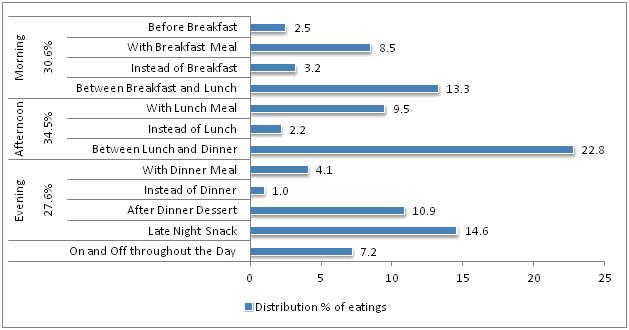
Source: The NPD Group/SnackTrack Canada, year ending December 2009
What Are The Reasons For Choosing Snack Food Products?
The primary reasons for consumers to choose a snack are enjoyment, indulgence, and convenience. Enjoyment is the number one motivation for 30% of snack eaters, although it has a downward trend from 2006 to 2009. Indulgence continues to grow in importance. Convenience is another reason that continues to be a strong consideration when selecting snack foods for 13% of consumers.
Reasons that best describe why snack oriented foods were chosen
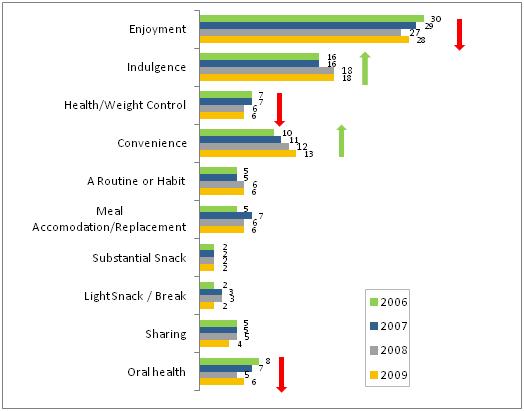
Source: The NPD Group/SnackTrack Canada, year ending December 2009
From Where Did Consumers Purchase Their Snacks?
Where snack oriented foods eaten in between meals are purchased, percent of eating
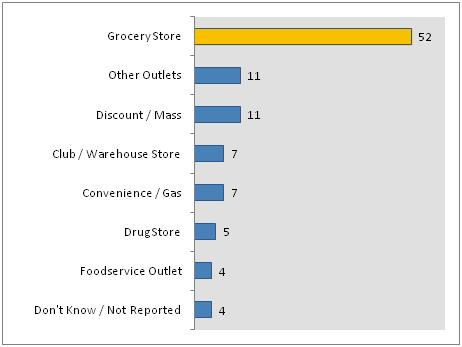
Source: The NPD Group/SnackTrack Canada, year ending June 2010
Snacking And Health
Health is indicated as an important consideration when choosing a snack for 6% of consumers. Health choices are expressed through a presence of special labels on a snack oriented foods.
Most popular special labels on snack oriented foods, distribution percent of eating
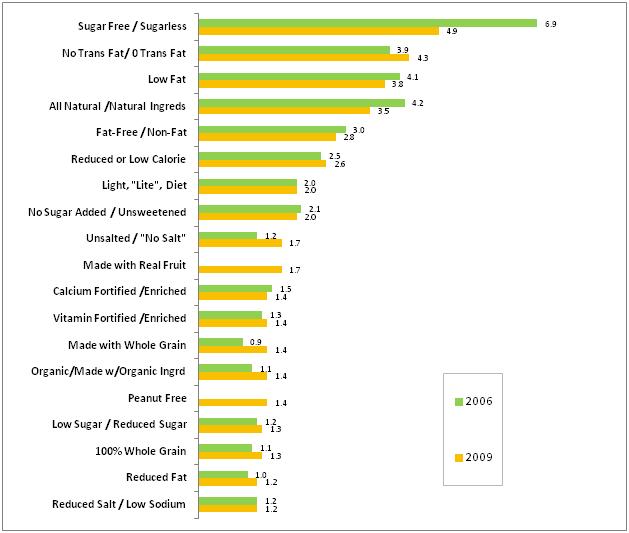
Source: The NPD Group/SnackTrack Canada, years ending December
Do You Know These About Children’s And Teen’s Snacking Habits………
- Teens are more likely to eat snack foods as a meal replacement
- High consumption of non-traditional snacks: cereals, pizza, sandwiches
- Teens frequent to convenience stores to purchase snacks
- 6-12 ages are more likely to carry snacks from home
- More snacking while playing games, specially video games
- Compared to total population, health is less likely to be a motivating factor in making snack food choices when children and teens are considered
- Children who eat more snack meals are less likely to overweight.
Source of Information
The NPD Group reports: Snacking in Canada in 2010
The primary source of this report based on:
- National Eating Trends (NET) which tracks consumption behavior relating to retail and restaurants.
- Health Track Canada which adds attitudes and diet status to NET data base.
- Snack Track, which tracks the consumption and sourcing of snack foods by individuals.
Snacking in Canada report in podf version |
|